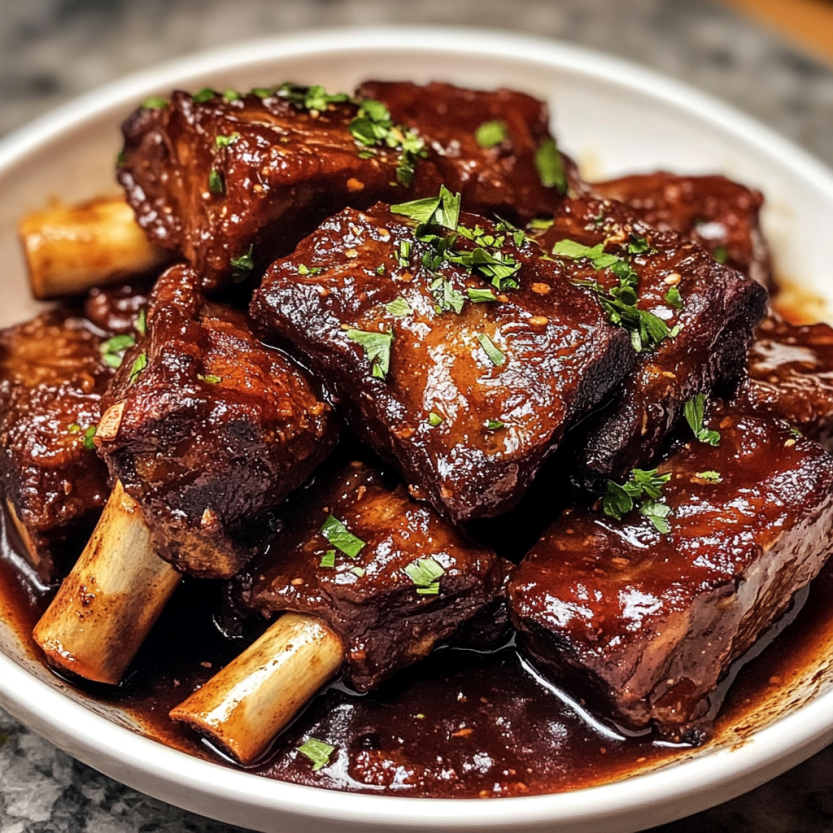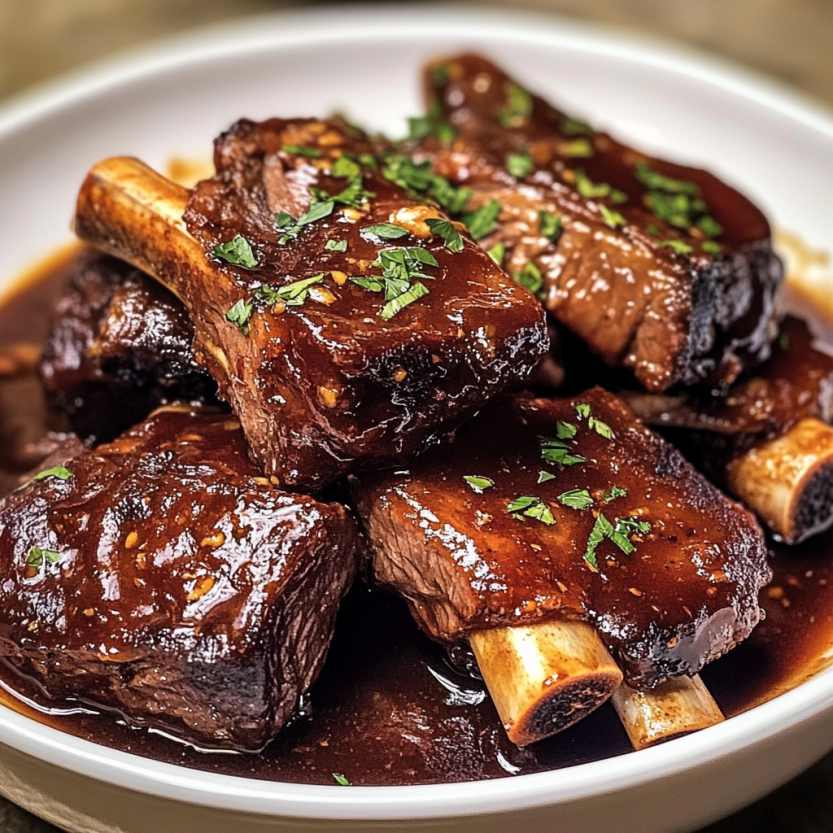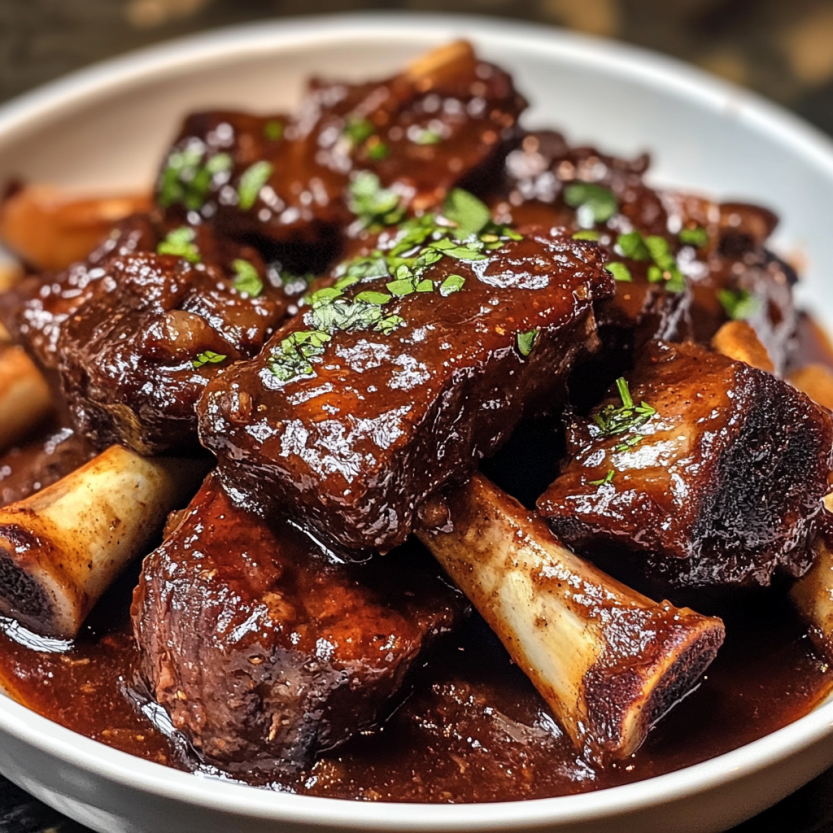 Save
Save
This heavenly smoked beef short ribs recipe transforms tough cuts into melt-in-your-mouth meat with incredible smoky flavor. After years of experimenting with different smoking techniques, I've perfected this method that delivers that irresistible bark on the outside while keeping the meat tender and juicy inside.
I discovered this technique during a summer barbecue competition where I was determined to beat my neighbor's famous ribs. Not only did I win, but this has become our family's signature dish for special gatherings.
Ingredients
- Beef short ribs bone-in choosing bone-in ribs provides more flavor and juiciness as the marrow melts during smoking
- Olive oil helps the seasonings stick and promotes browning
- Kosher salt more coarse than table salt, it creates a better crust and penetrates the meat perfectly
- Black pepper freshly ground provides the most robust flavor and essential peppery bite
- Garlic powder adds savory depth without burning like fresh garlic would during long smoking
- Smoked paprika reinforces the smoky flavor and adds beautiful color to the bark
- Optional beef broth or apple juice for spritzing keeps the meat moist during the long smoking process
Step-by-Step Instructions
- Preheat Smoker
- Heat your smoker to exactly 250°F using hardwood like oak, hickory, or mesquite for authentic smoky flavor. Temperature consistency is crucial throughout the cook, so ensure your smoker is properly calibrated before starting.
- Prepare the Ribs
- Carefully trim any excessive fat cap while leaving about 1/4 inch for flavor and moisture. Remove the tough silver skin membrane from the bone side using a butter knife to lift an edge and paper towel to grip and pull it off completely. This allows better smoke penetration and more tender results.
- Season Generously
- Massage olive oil into every surface of the ribs creating a sticky base for your seasonings. Mix salt, pepper, garlic powder and smoked paprika in a small bowl, then apply liberally to all sides of the meat. Press gently to adhere the seasonings to the meat surface.
- Position on Smoker
- Place the seasoned ribs bone-side down directly on the smoker grates ensuring at least an inch of space between pieces for proper smoke circulation. This position protects the most tender part of the meat and allows the fat to render down through the meat.
- Maintain the Smoke
- Monitor the smoker temperature closely for the first hour to ensure stability. After two hours, begin spritzing the meat every 60 minutes with beef broth or apple juice to maintain moisture and help develop a beautiful exterior bark.
- Test for Doneness
- Around the 6-hour mark, start checking internal temperature at the thickest part of the meat away from the bone. The target temperature is 200-205°F, but the true test is inserting a probe that should slide in with almost no resistance like pushing into warm butter.
- Rest Before Serving
- Remove the perfectly smoked ribs from the heat, loosely tent with foil allowing for some steam to escape, and rest for a full 30 minutes. This crucial step allows juices to redistribute throughout the meat for maximum tenderness and flavor.
 Save
Save
The smoked paprika is my secret weapon in this recipe. My grandfather who was a dedicated pitmaster always insisted on using this Spanish spice to enhance the natural smoke flavor. Every time I catch that distinctive aroma rising from the smoker, I remember summer evenings watching him tend his pit with meticulous care.
Choosing the Perfect Ribs
When selecting beef short ribs, look for pieces with good marbling throughout the meat. Contrary to what you might think, more fat marbling means more flavor and tenderness after the long smoking process. Choose ribs that are bright red with white fat rather than yellowish fat which indicates older meat. Plate short ribs from the lower part of the rib cage tend to have more meat than chuck short ribs, though both work beautifully in this recipe.
Smoke Ring Science
That beautiful pink ring just beneath the surface of perfectly smoked ribs isn't just visually appealing it's actually evidence of proper smoking technique. The pink color develops when nitrogen dioxide from wood smoke interacts with the myoglobin in the meat. To achieve the best smoke ring, ensure your meat is cold when it goes into the smoker, use wood with good nitrogen content like hickory or oak, and maintain optimal humidity in your smoker with a water pan. The smoke ring stops developing around 140°F internal temperature, which is why the initial smoking period is so important.
Serving Suggestions
These smoked beef short ribs pair wonderfully with sides that balance their richness. Creamy coleslaw provides refreshing crunch and acidity to cut through the fatty meat. Smoky baked beans complement the BBQ flavors perfectly. For something unexpected, try serving the ribs with creamy polenta or mashed potatoes to soak up the incredible juices. When plating for guests, consider slicing the meat off the bone and serving it atop the sides for an elegant presentation, or leave the meat on the bone for a more rustic, impressive display.
 Save
Save
Recipe Questions
- → How do I know when beef short ribs are done smoking?
Beef short ribs are done when they reach an internal temperature of 200-205°F (93-96°C) and a probe or toothpick slides into the meat with almost no resistance - like sliding into butter. The meat should be tender enough that it's nearly falling off the bone, which typically takes 6-8 hours at 250°F.
- → What wood is best for smoking beef short ribs?
Oak, hickory, and mesquite woods are excellent choices for smoking beef short ribs. Oak provides a medium-strong smoke flavor that complements beef without overpowering it. Hickory offers a stronger, bacon-like flavor profile, while mesquite delivers the boldest, most intense smoke character. Choose based on your preference for smoke intensity.
- → Should I wrap beef short ribs during smoking?
Wrapping beef short ribs is optional. For maximum bark development, leave them unwrapped the entire cook. If you prefer more tender ribs or want to speed up the cooking process, you can wrap them in butcher paper or foil after they reach about 165°F internal temperature. This is called the 'Texas crutch' method and helps push through the stall while retaining moisture.
- → Why spritz the beef short ribs during smoking?
Spritzing beef short ribs with beef broth or apple juice serves multiple purposes. It helps maintain moisture in the meat during the long cooking process, prevents the surface from drying out too quickly, and enhances smoke adhesion. The sugars in apple juice can also contribute to better bark formation and add subtle flavor.
- → How should I store and reheat leftover smoked beef short ribs?
Store leftover smoked beef short ribs in an airtight container in the refrigerator for up to 4 days. To reheat, wrap the ribs in foil with a splash of beef broth or water and warm in a 300°F oven until they reach 165°F internally (about 20-30 minutes). Alternatively, vacuum-sealed ribs can be frozen for up to 3 months and reheated using the sous vide method for best results.
- → What sides pair well with smoked beef short ribs?
Smoked beef short ribs pair beautifully with classic BBQ sides. Try creamy coleslaw, baked beans, mac and cheese, garlic mashed potatoes, cornbread, or grilled vegetables. The rich, smoky meat benefits from sides that offer contrasting textures and complementary flavors - something creamy, something acidic, or something with a bit of sweetness works particularly well.